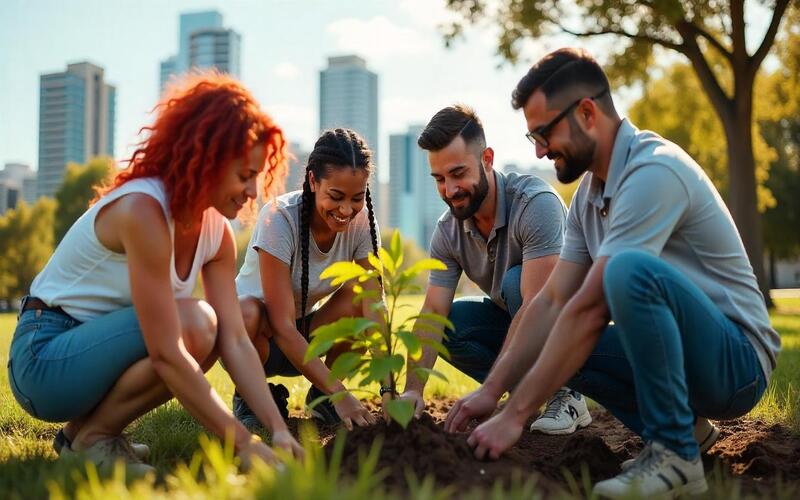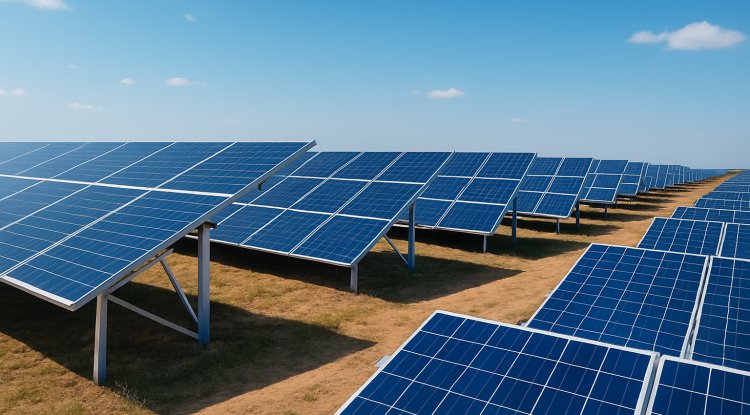How Sustainable Education Is Shaping the Leaders of Tomorrow

Sustainability 101: Because Planet Earth Has No Backup
The clock ticks: this decade sets the course for the next century. As climate change speeds up, the need grows for leaders with green minds and careful hearts. The future depends on educating in new ways, innovating with care, and taking environmental responsibility, or facing final consequences.
Are we holding off on taking action until future generations are drowned by glaciers? People use more air conditioners and freezers when the world temperature rises by even one degree. These gadgets release dangerous chemicals that contribute to the ongoing cycle of global warming, which needs to end immediately. We all have a duty to act, and educational establishments like ours have enormous potential to serve as hubs for awareness and action.
Eco Is Education's New Ego: Greenpower Meets Brainpower
Shaping green leaders means more than books. It needs real practice in sustainable programs, hands-on recycling and upcycling, and living green ethics as a habit. Without preaching, here are some real examples:
From Chalk to Change: Lessons in Sustainability
Some schools have led upcycling and sustainability in higher education for over a decade, showing that what many thought was not possible can happen.
• These campuses reduce carbon emissions in buildings and gadgets by using mostly upcycled and refurbished materials. For example, a leather tannery turns into a full vertical college at iLEAD Kolkata.
• Interiors are cleverly done with reused materials. Green living shows in hanging planters, eco-friendly woodwork, smart lighting, upcycled glass interiors, and clear sustainability rules throughout. ECOWUD creations have been popular since 2001.
• Curriculums include sustainability case studies and give students live chances to use new AI-driven upcycling methods in real learning. You get ready materials to upcycle with sizes and AI skills to design interiors and floor plans based on raw materials.
• Regular green drives push students to plant saplings in small pots, later moved to larger green spaces, growing care for the environment. By hanging all the recycled bottle planters inside homes, classes, or offices.
• All the educational institutions have already leapt by organising different events at the schools. What more can be done by taking students to places where they can observe sustainability, like taking them to a resort that uses rainwater harvesting and other green practices. This builds broader ecological knowledge beyond classes.
This mindset gives students the power to lead big change across industries because they set examples of awareness and use green practices. Schools that mix these programs make a positive impact, matching many UNSDGs. Ready to start now? You should be.
Turning Degrees into Deeds: Teach Green, Lead Bold
Sustainable education is no passing trend; it is basic to survive. Yet, global data show a big gap. OECD reports that fewer than 40% of graduates can explain “net zero” well. This gap grows between jobs and green skills. We need to show and inculcate the value of sustainability by making them learn and understand the signs of climate change and extreme weather conditions.
The World Economic Forum's 2024 Future of Jobs Report says up to 85 million green jobs go unfilled by 2030 because of this gap. The current education, mostly theory, needs to change. Curriculums must stress results-based learning and give students skills to create green solutions and adopt green business ways.
Practice as the Path to Learning: Educate. Innovate. Regenerate.
To grow true green leaders, education must move from passive to active practice. By linking sustainability in daily school life, schools shape graduates who use green thinking in both life and work. Showing sustainability in clear ways—plants in reused pots, classrooms powered by smart energy, projects based on upcycling and recycling—leaves a lasting mark.
Innovating to Protect: The Syllabus Mother Nature Would Approve
Learners who use green ways daily take in sustainable values deeply. They support and lead change when they start work. They graduate with knowledge, experience, and belief to guide communities and industries toward caring for the environment.
To Sum Up: Greening Minds, Not Just Campuses
The future depends on how well we teach today. Green education must move from ideas to real, hands-on learning that makes real-world change. Our planet’s survival rests on leaders who don’t just explain “net zero” but show it in what they do. With a comprehensive green and environmental education programme, we close the skills gap, fill millions of green jobs, and protect the world for future generations.
Climate Change Begins In the Classroom
The time to act is now. Schools worldwide are adopting sustainable education as a fundamental step to shape leaders today—with green minds, caring hearts, and a commitment to protect the planet for many generations.
Views are personal
What's Your Reaction?

















